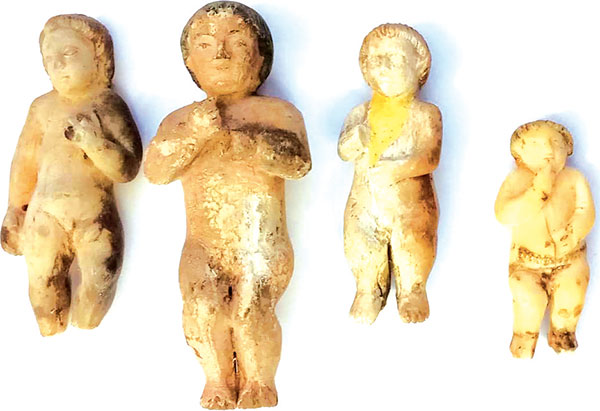
FRAZER ANDRADE
MARGAO: From its golden sands to lush paddy fields, majestic waterfalls to enchanting forests, and the harmonious blend of Indo-European culture, Goa carries a rich tapestry of history. One aspect of Goan tradition, deeply rooted in the convergence of European and indigenous influences,
is the practice of gifting idols of deities to brides during their wedding
ceremonies.
Among the orthodox Goan Hindu community, a unique custom prevails. In certain Gaud Saraswat Brahmin families, the mother of the bride presents her daughter with specific idols as part of her wedding trousseau. These sacred gifts include Lord Ganesh, the embodiment of knowledge, Goddess Lakshmi, symbolising prosperity, and Baby Krishna cradled in a loving embrace, a hopeful wish for a male child, considered the beacon of the household. These idols, crafted with silver or other precious materials, are displayed alongside the entire trousseau during a special ceremony called ‘rupawat’ or ‘rukwat’, allowing close family and friends to marvel at the beauty of the offering.
Similar traditions are observed in other Hindu Brahmin families across Goa, albeit with slight variations. In these households, the mother-in-law gifts the bride an image of Baby Krishna during her fifth or seventh month of pregnancy, coinciding with the baby shower celebration known as ‘fullam’. Flowers adorn the pregnant bride's head, announcing the pregnancy to loved ones. The intention behind gifting the image of Bal Krishna remains the same, bestowing blessings upon the expectant couple. This tradition is specific to Brahmin and Kshatriya families in Goa and various other states in India.
A parallel practice, with a subtle twist, can be found among Goan Catholic Kshatriya and Brahmin families. Here, the mother of the bride presents her daughter with an image of the Infant Jesus, crafted from wood, bone, ivory, or silver. Adorned with jewellery reminiscent of Indian cultural traditions, such as waistbands, anklets, and bracelets, these images bear a striking resemblance to those of baby Krishna in the cradle. Artisans, both Hindu and newly converted Catholic, sculpt these intricate creations, showcasing the beautiful fusion of cultures.
In addition to these customs, a tradition is followed by all Catholics in Goa, regardless of their caste. The bride-to-be is gifted a rosary and a statue of the patron saint of her affiliated church. For instance, a girl from Velim in South Goa may receive an image of Saint Francis Xavier, symbolizing her devotion and serving as a means to propagate her spiritual connection into her new home after marriage.
Yet another tradition, now seldom observed, once prevailed among Goan Catholics of Brahmin, Kshatriya, and Shudra backgrounds. Uniquely tied to the bride's needlework skills, young girls were required to master various stitching and embroidery techniques. During the proposal process, the prospective bride presented a meticulously stitched cloth sample, showcasing her mastery of different embroidery styles. The groom's family would then select a particular embroidery type from the sample, requesting the bride to create a decorative wall hanging bearing a portrait of the Sacred Heart of Jesus,
the Immaculate Heart of Mary, or a floral design. Evaluated based on her needlework, the completed piece would be framed and presented to the groom, becoming a testament to the bride's skill and artistry.
These age-old traditions illuminate the unique heritage of Goan weddings, where Gods and artistry unite to celebrate the sacred union of souls.
